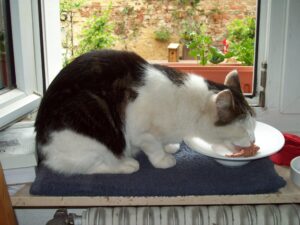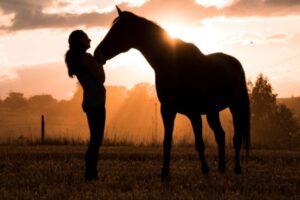Never having owned a bird before, when I brought my little one home, I was like a new parent just after giving birth. A little scared – but motivated by love.
Having decided to take on a commitment that meant years of nurturing and caring for another being seemed a little daunting, I set out to be the best bird parent I could possibly be. I learned as much as I could to give my new family member his best life.
Here are some of the things I picked-up that I’d like to share with you.
A Basic Overview
Choose a cage that is spacious and has the appropriate bar spacing for your bird’s size.
Position the cage in a safe, comfortable spot away from hazards like windows, kitchens, and toxic plants.
Offer a balanced diet and be aware of foods that are toxic to birds, such as chocolate and avocado.
Ensure the air quality in your home is bird-friendly, avoiding smoke, fumes, and strong scents.
Prepare a bird first aid kit and know the signs of poisoning and distress, so you can act quickly in an emergency.
Know what stimulates a bird’s cognitive sense
Creating a Bird-Friendly Home Habitat
Designing a bird-friendly home is the first step to ensuring your pet’s safety. You’ll want to create an environment that caters to their instinctual needs while keeping them out of harm’s way. Here’s a few things to take action on:
Remove or secure potential hazards like small objects they might ingest or heavy items they could topple.
Keep windows and doors closed or use secure screens to prevent escapes.
Use bird-safe cookware and avoid non-stick coatings that can release harmful fumes when overheated.
Give them the appropriate space to their species
Incorporate interactive toys to avoid boredom
Different Birds Have Different Needs
Each species of bird has its own specific requirements for care. From the humidity of the air to the types of toys they need for mental stimulation, it’s crucial to tailor your approach to the unique needs of your bird. For example, African Grey Parrots thrive on mental challenges, while a Canary needs space to fly. Do your homework.
Home Setup
Naturally you want your avian family member to be comfortable, but it’ doesn’t stop there. This isn’t just about comfort; it’s about minimizing risks and ensuring they have a space that’s truly their own.
The Right Cage Set-up Size, Shape, and Bar Spacing
Size, shape and bar spacing need to be taken into consideration. Make sure it’s the right size for them to stretch their wings, climb, and play. The bar spacing should be narrow enough to prevent them from sticking their heads out and possibly getting stuck.
For small birds like finches and budgies, bar spacing should be no more than 1/2 inch apart.
Larger birds, such as macaws and cockatoos, need bar spacing between 3/4 inch to 1 inch.
The shape of the cage matters too. Avoid round cages which can cause stress and orientation issues. (Who would have guessed? Right?)
How do I bird-proof my home?
Secure loose wires and cords that birds might chew on or get tangled in.
Remove toxic houseplants and household chemicals from areas accessible to your bird.
Install guards on windows and mirrors to prevent injury from collisions.
Ensure all fans are off when your bird is out of its cage.
Keep toilet lids closed and cover any open water to prevent drowning accidents.
Bird-proofing your home is like baby-proofing; it’s all about anticipating what could go wrong. Look around your home from your bird’s perspective and consider anything that might be a threat. Small objects that can be swallowed should be kept out of reach, and spaces where birds could get stuck or trapped should be blocked off.
Strategic Placement
Practical sense as to where you place your birds cage should include where and where not to place your little buddy’s abode. It’s their home within your home and their personal sanctuary where they should feel safe and still a part of the family.
However, there are places to avoid:
Never place the cage in the kitchen. Cooking fumes, especially from Teflon, can be deadly to birds.
Avoid direct sunlight, drafts, and high-traffic areas that might cause stress or injury.
Keep the cage a relative distance away from windows where predators could be a threat or where your bird might be tempted to fly into the glass.
- Additionally, the location of the cage in your home matters. Place it away from drafty windows or doors and out of direct sunlight. It should be in a spot where the bird can observe the family without being in the middle of the hustle and bustle, which can be stressful.
For more advice on creating a safe and comfortable environment for your pet, check out these pet-friendly travel routes and planning guide.
Quality Foods and Treats
Just like us, birds need a balanced diet to stay healthy. Each bird species is going to need food specific to them in order to thrive. It’s up to you to research which pellets, fruits and vegetables are best suited for your particular breed. For instance, lorikeets have a diet rich in nectar, while an African Grey might require additional calcium in their diet. Seeds can be given, but in moderation, as they are high in fat.
Always provide fresh water daily, and wash food and water dishes regularly to prevent bacterial growth.
Toxic Foods and Plants for Birds
Many common household foods and plants can be harmful, even lethal, to birds. It’s crucial to know which items to keep out of beak’s reach. Here are some of the most common toxic substances for birds:
Poisonous fumes from overheated non-stick cookware
Toxic plants like lilies, azaleas, and philodendrons
Open water sources where birds can drown, such as toilets, sinks, and vases
Small, easily ingestible items like rubber bands, jewelry, and paper clips
Windows and mirrors where birds may injure themselves by flying into them
Avocado
Chocolate
Caffeine
Alcohol
Onions and garlic
Salt and fatty foods
Interaction and the Joys of Ownership
Birds are delicate creatures, and mishandling can lead to injuries. Always approach your bird calmly and speak softly to avoid startling them. When letting your bird out of its cage for some free-flight time, ensure the room is secure with closed windows and doors, and no open water sources where they could end up beak down.
Birds are social creatures and require mental stimulation to stay happy and healthy. Toys are not just for fun; they provide necessary mental and physical exercise. Rotate toys regularly to keep things fresh and engaging for your bird.
Bonding, Safe Handling and Socialization
Building a bond with your bird involves trust and respect. Start by offering treats from your hand to encourage them to come to you. Gradually, you can work on training and handling, using positive reinforcement to reward good behavior. Never force interaction, as this can lead to stress and aggression.
Air Quality and Ventilation
My girlfriend learned this lesson the hard way. After volunteering to care for a friend’s parakeet, after just a week she found the little fellow lifeless at the bottom of his cage. As it turns out her house had hidden mold in the walls, and she never knew it. The bird – in a sense – sacrificed its life to send her a warning that her environment was toxic.
Birds have sensitive respiratory systems, making good air quality vital for their health. Smoke, aerosol sprays, scented candles, and even cooking fumes can be harmful. Here are some ways to maintain clean air for your bird:
Use an air purifier to remove dust and dander.
Avoid smoking or using strong chemicals around your bird.
Ensure proper ventilation, especially if you must use anything that could emit fumes.
Always supervise your bird when it is out of its cage, and make sure to bird-proof any room they have access to. It’s better to be safe than sorry, as birds can get into trouble very quickly.
Emergency Readiness
Accidents happen, and when they do, it’s important to be prepared. Having a bird first aid kit on hand is a must for any bird owner. This kit should include:
Phone numbers for your avian vet and a 24-hour emergency clinic
A small towel or blanket to wrap your bird in
Styptic powder or cornstarch to stop bleeding from minor cuts to stop bleeding from a broken nail or feather
Scissors, tweezers, and cotton swabs for trimming nails or removing foreign objects.
Saline solution for flushing wounds
Antiseptic wipes or spray
Gauze pads, bandages, and adhesive tape for dressing wounds.
Disposable gloves
A syringe or eyedropper for administering medications or fluids
A heat source, such as a hot water bottle, to keep an injured bird warm
Scissors and tweezers for trimming nails or removing foreign objects.
A small flashlight to examine your bird’s mouth or check for injuries.
Ensure you know how to use each item in your first aid kit, and check the contents regularly to replace any used or out-of-date products.
Recognizing Critical Signs: When to Seek Veterinary Help
Knowing the signs of illness or distress in your bird is crucial for their survival. Watch for any changes in behavior, such as decreased appetite, lethargy, or changes in droppings. If you notice any of these signs, or if your bird has been injured, it’s important to contact your avian vet immediately. Time is of the essence when it comes to the health of your bird.
FAQs
How do I bird-proof my home?
Bird-proofing involves removing hazards, securing windows and doors, and ensuring that anything toxin is kept well out of reach. Think like a bird, and consider anything they might chew, pull, or knock over.
What are some common indoor hazards for birds?
Common hazards include open water sources, toxic foods or plants, ceiling fans, and uncovered windows that birds might fly into.
How can I ensure my bird’s cage is safe?
Choose a cage with appropriate bar spacing, secure latches, and no sharp edges. Regularly inspect for wear or damage, and keep the cage clean to prevent disease.
What should I include in a bird first aid kit?
A comprehensive bird first aid kit should include items like styptic powder, gauze, saline solution, and the contact information for your avian vet.
What should I do if I suspect my bird has been poisoned?
If you suspect poisoning, immediately remove the source of the toxin, offer fresh water, and call your avian vet or an animal poison control center for advice.
Also, pay special attention to the kitchen. It’s full of dangers, from hot surfaces to toxic foods. When cooking, keep your bird safely in another room to prevent any accidents.
Lastly, remember that birds are sensitive to fumes. Common household items like scented candles, air fresheners, and cleaning products can be harmful, so use these with caution and ensure proper ventilation.
How can I ensure my bird’s cage is safe?
Example: “For a parakeet, a cage with dimensions of at least 18″x18″x24″ and bar spacing no wider than 1/2 inch is recommended to provide enough space and to prevent escape or injury.”
Inspect the cage regularly for any signs of damage or wear that could harm your bird.
Make sure the cage is made from non-toxic materials and that the paint is lead-free.
Check that all doors and openings have secure latches to prevent your bird from escaping.
Finally, keep the cage clean. Regularly remove waste and uneaten food, and disinfect the cage to prevent the spread of disease.
Now Enjoy!
Birds can be the best companions. They bring us peace and a sense of calm. They bring us laughter and can add to the playfulness of our life. So, while keeping your bird happy and healthy it will always in some way be reciprocal. Gotta love these guys!




Leave a Reply